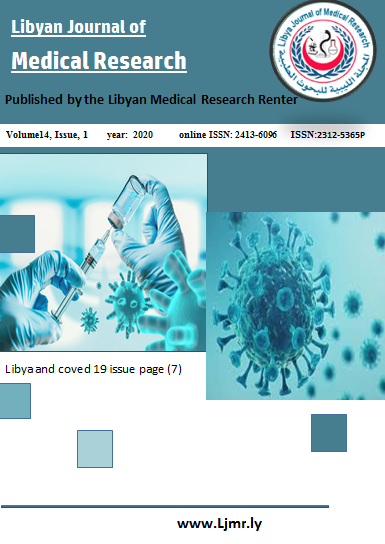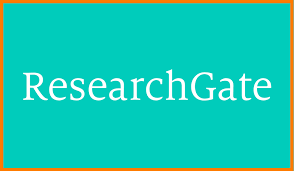Time to Ban Nimesulide From the Libyan Medicines Market
DOI:
https://doi.org/10.54361/ljmr.v14i1.07Keywords:
Nimesulide, adverse drug reaction, drug-induced liver injury, ban, LibyaAbstract
Nimesulide is a non-steroidal anti-inflammatory drug with analgesic and antipyretic properties which was launched in Italy as Aulin® in 1985. Huge concerns were raised regarding this drug as its users are at a high risk for developing a serious ADR called Drug-Induced liver Injury which may lead to liver failure. The goal of this study was to sheds light on nimesulide which is present illegally in private pharmacies and to the harm that it may pose on public health; in order to draw the attention of the responsible authorities to the danger of its availability in our market. A survey of 65 pharmacies in Tripoli was conducted to identify the availability of nimesulide in these pharmacies. The knowledge of its different dosage forms, strength, brands available, pattern of prescribing, and ADRs among pharmacists and coworkers were all collected. 100 % response was obtained as 65 pharmacy personnel answered the questionnaire. We found out that this medicine is available in all of them. The response to the questionnaire is illustrated in figures from1 to 4. Nimesulide dispensing pattern was shown to be almost always through patients’ request. In conclusion, the uncontrolled presence of this medicine may pose a public health risk, therefore a request for its ban from Libyan market should be seriously considered
Downloads
References
Rainsford KD, Bevilacqua M, Dallegri F, et al. (2005) Pharmacological properties of nimesulide. In: Nimesulide - Actions and Uses. pp. 133-244. (Birkhauser Verlag AG).
Nimesulide. https://www.drugbank.ca/drugs/DB04743. Accessed October 18, 2018.
Ostapowicz G, Fontana RJ, Schioødt F V., et al. (2002) Results of a prospective study of acute liver failure at 17 tertiary care centers in the United States. Ann Intern Med. 137 (12): 947-954.
Reuben A, Koch DG, Lee WM (2010) Drug-induced acute liver failure: Results of a U.S. multicenter, prospective study. Hepatol. 52(6): 2056-2076.
Wei G, Bergquist A, Broomé U, et al. (2007) Acute liver failure in Sweden: Etiology and outcome. J Intern Med. 262(3): 393-401.
Bechmann LP, Manka P, Best J, et al. (2014) Drug-induced liver injury as predominant cause of acute liver failure in a monocenter study. Dtsch Med Wochenschr. 139(17): 878-882.
Watkins PB, Seeff LB (2006) Drug-induced liver injury: summary of a single topic clinical research conference. Hepatol. 43(3): 618-31.
Navarro VJ, Senior JR. (2006) Drug-Related Hepatotoxicity. N Engl J Med. 354(7): 731-739.
Abboud G, Kaplowitz N. (2007) Drug-induced liver injury. Drug Safety. 30(4): 277-294.
Day RO, Graham GG. (2013) Non-steroidal anti-inflammatory drugs (NSAIDs). Br J Sports Med. 47(17):1127.
Ungprasert P, Cheungpasitporn W, Crowson CS, Matteson EL. (2015) Individual non-steroidal anti-inflammatory drugs and risk of acute kidney injury: A systematic review and meta-analysis of observational studies. Eur J Intern Med. (4): 285-91.
Motola D, Vargiu A, Leone R, et al. (2007) Hepatic adverse drug reactions: A case/non-case study in Italy. Eur J Clin Pharmacol. 63(1): 73-79.
Nimesulide | European Medicines Agency. https://www.ema.europa.eu/medicines/human /referrals /nimesulide-1. Accessed October 18, 2018.
The International Society of Drug Bulletins - Nimesulide must be withdrawn worldwide due to serious liver damage. Therapeutics Initiative. https://www.ti.ubc.ca/2008/02/04/nimesulide-must-be-withdrawn-worldwide-due-serious-liver-damage/. Accessed October 21, 2018.
Downloads
Published
Issue
Section
License
Copyright (c) 2020 Amal Y Benkorah, Manal Hadood, Aisha Rafaei , Ghazi Benkura (Author)

This work is licensed under a Creative Commons Attribution-NonCommercial-NoDerivatives 4.0 International License.
Open Access Policy
Libyan journal of medical Research (LJMR).is an open journal, therefore there are no fees required for downloading any publication from the journal website by authors, readers, and institution.
The journal applies the license of CC BY (a Creative Commons Attribution 4.0 International license). This license allows authors to keep ownership f the copyright of their papers. But this license permits any user to download , print out, extract, reuse, archive, and distribute the article, so long as appropriate credit is given to the authors and the source of the work.
The license ensures that the article will be available as widely as possible and that the article can be included in any scientific archive.
Editorial Policy
The publication of an article in a peer reviewed journal is an essential model for Libyan journal of medical Research (LJMR). It is necessary to agree upon standards of expected ethical behavior for all parties involved in the act of publishing: the author, the journal editorial, the peer reviewer and the publisher.
Any manuscript or substantial parts of it, submitted to the journal must not be under consideration by any other journal. In general, the manuscript should not have already been published in any journal or other citable form, although it may have been deposited on a preprint server. Authors are required to ensure that no material submitted as part of a manuscript infringes existing copyrights, or the rights of a third party.
Authorship Policy
The manuscript authorship should be limited to those who have made a significant contribution and intellectual input to the research submitted to the journal, including design, performance, interpretation of the reported study, and writing the manuscript. All those who have made significant contributions should be listed as co-authors.
Others who have participated in certain substantive aspects of the manuscript but without intellectual input should only be recognized in the acknowledgements section of the manuscript. Also, one of the authors should be selected as the corresponding author to communicate with the journal and approve the final version of the manuscript for publication in the LJMR.
Peer-review Policy
- All the manuscripts submitted to LJMR will be subjected to the double-blinded peer-review process;
- The manuscript will be reviewed by two suitable experts in the respective subject area.
- Reports of all the reviewers will be considered while deciding on acceptance/revision or rejection of a manuscript.
- Editor-In-Chief will make the final decision, based on the reviewer’s comments.
- Editor-In-Chief can ask one or more advisory board members for their suggestions upon a manuscript, before making the final decision.
- Associate editor and review editors provide administrative support to maintain the integrity of the peer-review process.
- In case, authors challenge the editor’s negative decision with suitable arguments, the manuscript can be sent to one more reviewer and the final decision will be made based upon his recommendations.














